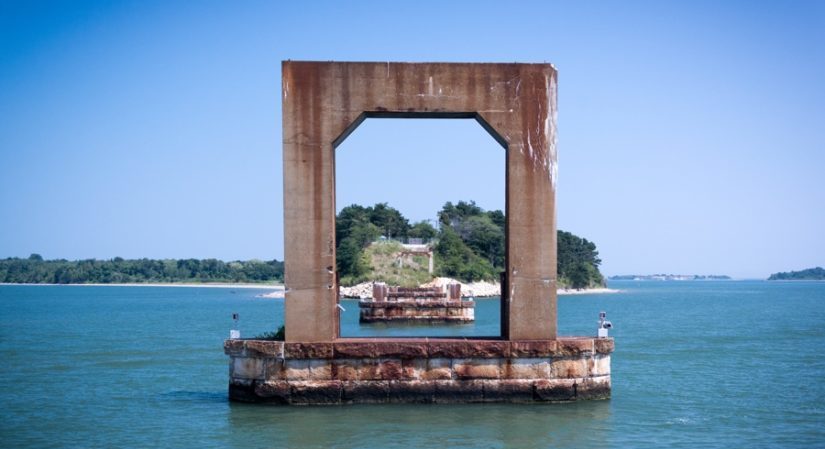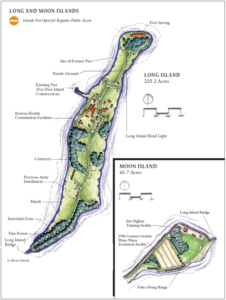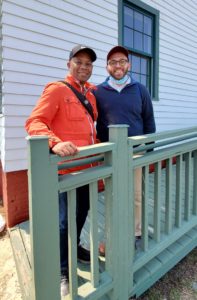
01 Sep In Pursuit of Recovery, Boston Seeks to Safeguard the Past
Sammy Nabulsi is a Partner at Rose Law Partners LLP and Treasurer of Historic Boston, Inc.’s Board of Directors. He is outside permitting and litigation counsel to the City of Boston on the Long Island Bridge superstructure replacement project and advises on compliance with federal, state, and local historic preservation laws. HBI asked Sammy to provide insight into planning for Boston Harbor’s historic resources as the City considers plans for a new bridge to Long Island.
On January 1, 2018, when then-Boston Mayor Martin J. Walsh vowed to reopen the Long Island public health facilities as a recovery campus for those suffering from opioid and other substance use disorders, Massachusetts had just seen its deadliest year for opioid-related deaths. In the midst of a global COVID-19 pandemic, the opioid epidemic in Massachusetts is still raging. The Massachusetts Department of Public Health reported 2,104 confirmed and estimated opioid-related deaths in 2020. That’s 102 more opioid-related deaths than the prior year and two more than Massachusetts’ peak year in 2016. 2020 broke records, and 2021 is on track to break them again. That’s why Boston continues to pursue the reconstruction of the Long Island Bridge in order to reestablish access to the Long Island recovery campus. The campus is a necessary local and regional tool to get the opioid epidemic under control and to save lives.
For decades, Long Island has been a place where our most vulnerable have found treatment, support, and refuge. Long Island’s story, however, is more than that of an island of hope for those suffering from opioid and other substance use disorders. Long Island is an important and painful part of history, having been both a place where Native Americans lived and where Native Americans were interred during King Philip’s War between 1675 and 1678. Long Island is part of the Boston Harbor Islands Archaeological District, which is listed on the National Register of Historic Places. In 2021, the National Trust for Historic Preservation identified the Boston Harbor Islands as one of the most endangered historic sites in the United States.

Image: Wikiwand.com
Long Island’s inclusion on the National Register of Historic Places triggers requirements and review under Section 106 of the National Historic Preservation Act. With that in mind, Boston prioritized the identification of archaeological sites, ensuring that the reconstruction of the Long Island Bridge will not adversely impact any Native American burial grounds or other archaeologically significant sites, and developing plans and protocols to ensure there will be no significant and adverse impacts during construction. While the focus of replacing the Long Island Bridge is to reestablish access to the public health campus on Long Island so that it may be used for treatment and recovery, Boston has given the safeguarding of historic and archaeological resources equal attention.
To support Boston’s compliance with state and federal historic preservation laws, Boston engaged the services of counsel and the professional archaeological consultants at Public Archaeology Laboratory, Inc. In 2019, at the request of the Massachusetts Historical Commission, Boston’s professional archaeological consultants performed an intensive archaeological survey, excavating test pits in the area of proposed work for the Long Island Bridge superstructure replacement. They located chipping debris and shell fragments, evidence of Native American activity, adjacent to the existing roadway and documented disturbed soils, especially north of the bridge approach roadway, likely from the construction of the original Long Island Bridge. The ground surface beneath the roadway was not investigated at that time.
Following the 2019 survey, Boston’s professional archaeological consultants made two recommendations: confine construction period staging to the north side of the roadway and perform machine-assisted investigation beneath the roadway. Boston adopted both recommendations. In July 2021, the archaeological consultants completed the machine-assisted archaeological investigation beneath the roadway to identify any archaeological features below the roadway, which may have been covered by fill when the original bridge was constructed. During the 2021 investigation, it was confirmed that there were no Native American burial sites in the area of proposed work.

Author Sammy Nabulsi (right) with fellow HBI board member Derek Lumpkins on a visit to Little Brewster Island.
During the archaeological investigations, Boston consulted with federally-recognized Native American tribes. Additionally, at Boston’s invitation, representatives of such tribes and their historic preservation offices attended and observed the archaeological surveys.
Even though Boston’s investigations demonstrate that the Long Island Bridge superstructure replacement project will not have adverse effects to significant historic properties, Boston has implemented additional measures to protect any unidentified cultural or archaeological resources that may be found during construction. Boston’s professional archaeological consultants have prepared a document titled Procedures Guiding Post-Review Discoveries of Historic Properties and Human Remains, with which Boston will require its contractors to comply. The document was prepared to ensure that protocols, notification procedures, and mitigation measures are in place and adhered to should any unanticipated cultural resources be identified notwithstanding the already-completed archaeological studies. The protocols also ensure that the project will not adversely affect any significant historic properties during the construction phase of the project.
Boston’s commitment to preservation and protection of the Boston Harbor Islands goes beyond Long Island and the Long Island Bridge replacement project. This spring, Boston announced that it would begin an archaeological climate action plan for all the Boston Harbor Islands. The project will result in a management plan for the Boston Harbor Islands’ archaeological resources at risk of erosion and other adverse impacts of climate change and sea level rise.
In rising to the urgency of the opioid use epidemic, Boston is simultaneously safeguarding historical and culturally significant sites on Long Island.
cover photo by Eric Kilby via flickr.com/creative commons



